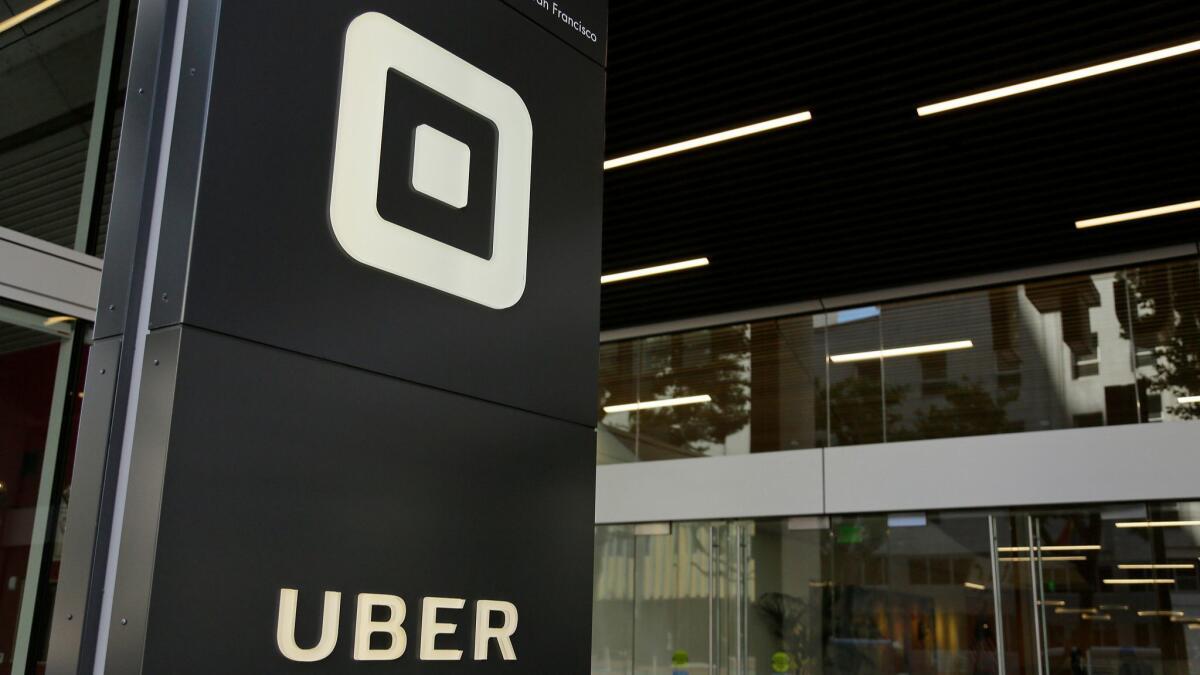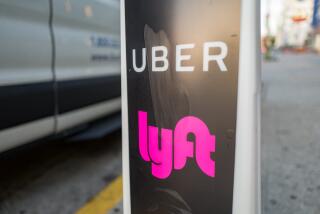Uber is adding safety features it resisted for years

After years of resisting major changes pushed by riders and government regulators, Uber announced upgrades this week that it said are aimed at keeping its U.S. ride-hailing customers safe.
Uber will add an emergency 911 feature akin to a panic button — a type of enhanced 911 that connects passengers directly with emergency personnel and enables them to share their location with the operator. The San Francisco company said it also will bolster driver screening by mandating annual reviews of background checks to ensure drivers remain in compliance with its standards. And it plans to enable riders to share their trip information with up to five “trusted contacts” on every trip so there are multiple sets of eyes to ensure rides go smoothly, the company said.
The changes, expected to be in place this summer, were unveiled as part of a broad package of changes that Chief Executive Dara Khosrowshahi said represent a push to “double down on safety in our app” and “strengthen our screening process.”
“In the past, Uber conducted background check reruns in jurisdictions where required,” Khosrowshahi said in a blog post Thursday. “Going forward, we’ll proactively rerun criminal and motor vehicle checks each year, regardless of whether there is a legal obligation to do so.”
While the changes are billed as proactive, the announcement effectively represents an admission that Uber has been falling short on passenger safety, as Khosrowshahi attempts to repair the company’s tarnished image nearly a year after former CEO Travis Kalanick departed.
Uber has been criticized for what regulators have seen as relaxed driver-screening standards. The company has resisted fingerprint-based background screening, which is preferred by law enforcement. The company left the Austin, Texas, area when local regulations mandated it — before returning last May. In Maryland, regulators agreed to a less stringent and costly process that both parties agreed could be as or more effective than fingerprinting.
The fears about passenger safety were illustrated most dramatically in Kalamazoo, Mich., in 2016. An Uber driver is accused of going on a shooting rampage, killing six, and was reported to have picked up passengers before and during the rampage. Jason Brian Dalton did not have a prior criminal record, police said, meaning standard checks would not have disqualified him from being an Uber driver.
But the incident, in which Dalton was reported to have alarmed passengers with his erratic driving, prompted calls for the type of panic button Uber unveiled in India during a furor over sexual assault allegations against a driver there.
At the time, Uber said that the feature was necessary in India because of that country’s less-developed emergency infrastructure, and that it had no plans to bring the feature to the United States. (The India version is different because in addition to notifying local authorities, it pings Uber’s own emergency response team.)
Despite their delayed arrival, the changes are likely to be welcomed by riders and the localities where Uber operates, given the company’s growing footprint in urban mobility. As Uber’s ridership has ballooned, reports of sexual assault, dangerous driving and passenger safety concerns have grown.
In addition to the bolstered driver screening, Uber said it is investing in a system to flag the company when drivers commit criminal offenses.
“We will investigate and verify any potentially disqualifying information from public records, such as a new and pending charge for a DUI, to ensure the driver is still eligible to use Uber,” Khosrowshahi said.
(Washington Post owner Jeff Bezos was an early investor in Uber.)






